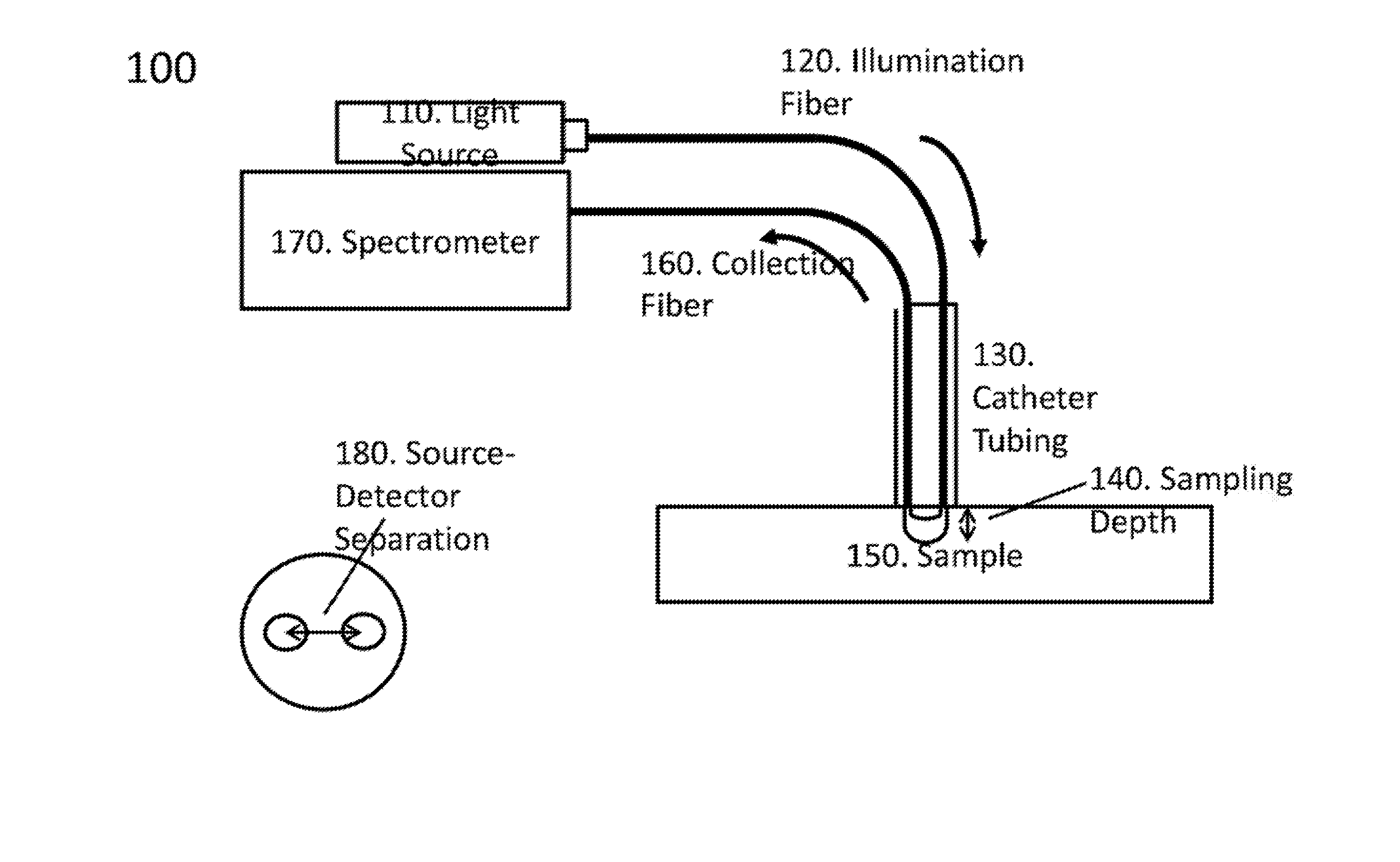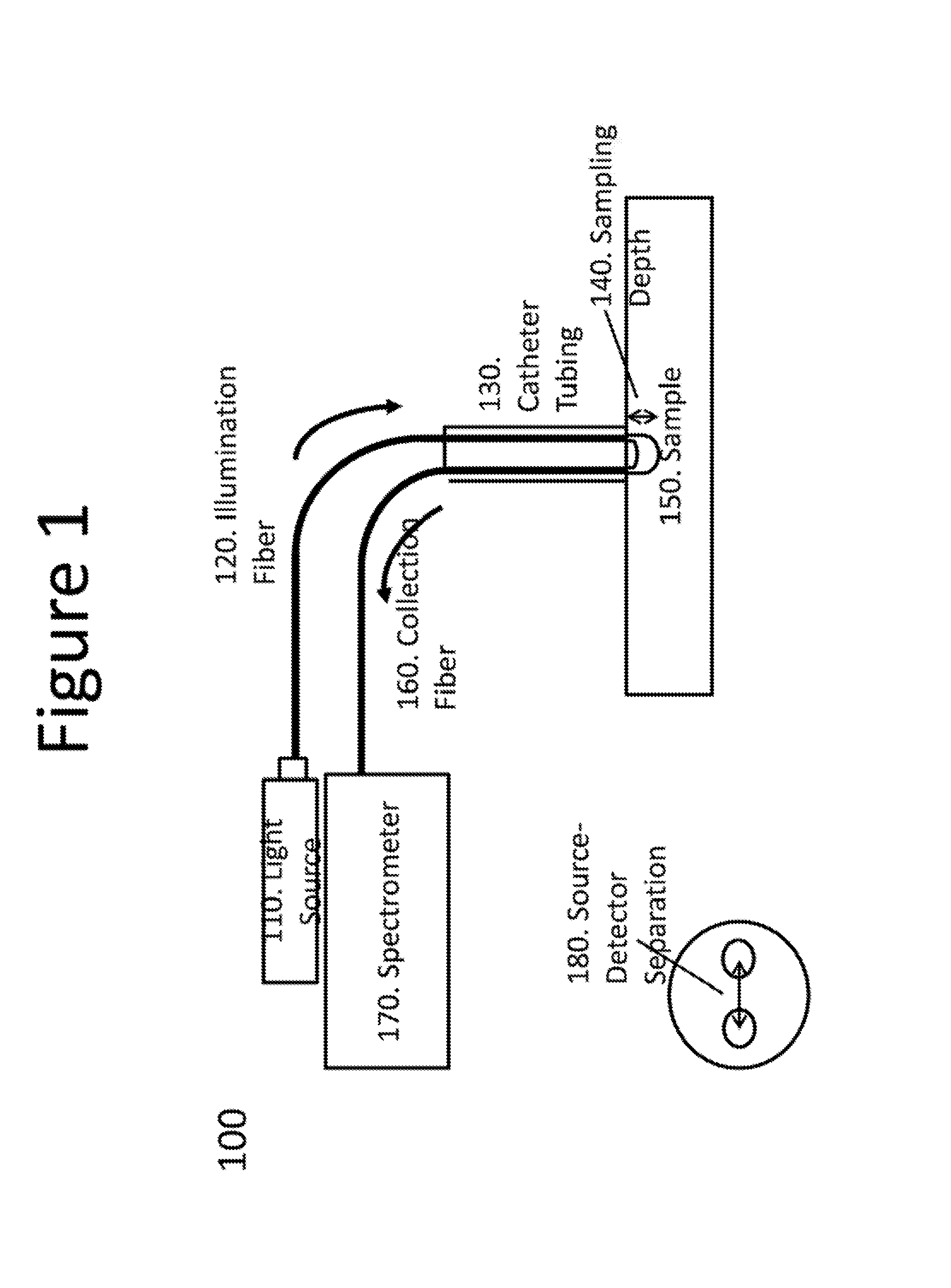System, method and computer-accessible medium for characterization of tissue
- Summary
- Abstract
- Description
- Claims
- Application Information
AI Technical Summary
Benefits of technology
Problems solved by technology
Method used
Image
Examples
Embodiment Construction
[0019]An exemplary system, method and computer-accessible medium for determining resultant information about a portion(s) of a tissue(s), can include, for example, receiving initial information which is based on a particular radiation that is returned from the portion(s), the particular radiation can be is based solely on an interaction between the portion(s) and a near-infrared radiation forwarded to the portion(s), and determining the resultant information about the portion(s) of the tissue(s) based on the initial information. The near-infrared radiation can be provided by a near-infrared light optical arrangement that can include a diffusely reflected near-infrared light arrangement. A depth of a lesion to be ablated can be determined by the near-infrared radiation based on the initial information. The initial information can include data corresponding to a reflectance spectrum(s) of the portion(s).
[0020]In some exemplary embodiments of the present disclosure, an ablation procedu...
PUM
 Login to View More
Login to View More Abstract
Description
Claims
Application Information
 Login to View More
Login to View More - R&D
- Intellectual Property
- Life Sciences
- Materials
- Tech Scout
- Unparalleled Data Quality
- Higher Quality Content
- 60% Fewer Hallucinations
Browse by: Latest US Patents, China's latest patents, Technical Efficacy Thesaurus, Application Domain, Technology Topic, Popular Technical Reports.
© 2025 PatSnap. All rights reserved.Legal|Privacy policy|Modern Slavery Act Transparency Statement|Sitemap|About US| Contact US: help@patsnap.com



